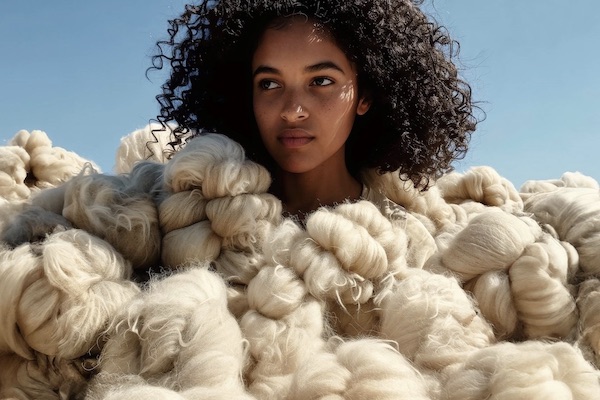Published on the 02/10/2024 | Written by Heather Wright

Primary sector output, meet AI…
New Zealand wool carpet company Bremworth has harnessed AI to create what it believes is the country’s first AI-generated television commercial, slashing costs by 60 percent and enabling the company to use savings to extend its reach.
The company is now eyeing up the potential of AI to reduce the cost of creating content to promote New Zealand wool in international markets such as Australia and North America.
“This has the potential to increase the accessibility of the NZ media industry, helping to retain more spend in this market rather than with multinational tech companies.”
The new commercial – sans any sheep in paddock shots at all – features a (albeit slightly repetitive) woman surrounded by cloud-like wool which streams across country vistas before falling into a lounge room to become carpet.
Bremworth chief brand and product officer Rochelle Flint says AI enabled the company to develop content that would have been difficult, time-consuming and expensive to create in real-world conditions.
Alongside a 60 percent reduction in the cost of production, Flint says there was a significant reduction in the time lag between production and going live with content.
Cost savings from the production have been reinvested into media space, extending Bremworth’s reach by an estimated 1.7 million views in local channels.
“If AI wasn’t available to us, we wouldn’t have had the budget to be able to go onto TV, because the cost of the video would have been too much,” she says.
Bremworth had initially looked into the use of AI as a more time-efficient way to produce still imagery for new product launches without the need for a traditional photo shoot before expanding to the television commercial.
Flint admits there were some bumps along the way, with an inability to make minor changes to scenes when creating the asset causing some issues.
“Artificial intelligence in this form is still in its infancy and using it in this way would not have been possible even six months ago. While we were initially apprehensive, our trials were successful and we continued to develop the full campaign.”
Many of the world’s biggest advertisers have been experimenting with generative AI to cut costs but when it comes to using it to create video, the results have been largely less than impressive.
Earlier this year Toys ‘R’ Us sparked an online backlash after it released an ad created almost entirely using OpenAI’s Sora video generation tool. The 66 second clip depicted company founder Charles Lazarus, complete with Geoffrey the Giraffe, dreaming of the world’s greatest toy store, but was quickly slated for looking ‘uncanny’, with the child ‘disgusting and ghoulish’ and ‘creepy’ and the storyline was neither interesting nor well-told.
Others noted concerns that AI will replace acting, writing and design roles and the environmental impact of the massive compute power required for AI.
Toys ‘R’ Us however, says the video was successful and it’s adding AI as part of its toolkit, while other viewers of the clip said it provided a fascinating look into the future of film.
An Under Armour commercial produced with the help of AI also caused a stir earlier this year, amid concerns of job displacement.
But an August 2023 report from Capterra showed 54 percent companies it surveyed had already used generative AI tools to create video content. Another 34 percent said their company wasn’t already using such tools, but was interested in doing so.
Those using the tools cited improved video quality as the biggest benefit, followed by higher engagement and in third equal, cost savings and increased volume production.
The report also highlighted drawbacks, particularly around achieving the desire style of videos and the generic or repetitive nature of AI-created content.
“AI-generated videos may require additional manual oversight,” Capterra says. “Some generative AI video tools may operate within predefined templates or styles, which can limit creative flexibility, resulting in videos that look similar to each other…. While a powerful tool, AI video generators are most effective when combined with human creativity and oversight.”
There are also concerns around copyright issues and the old issue of bias.
A recent YouGov survey found 70 percent of Australian respondents who were comfortable with AI being used to in advertising believed companies should disclose AI use for generating product images, while 67 percent said they should disclose if AI was used to edit images.
Flint, meanwhile, says the use of AI has opened up new possibilities and enabled Bremworth to experiment with more innovative and interesting campaign content while reducing both time and cost.
“The development of creative content in this way has the potential to increase the accessibility of the New Zealand media industry, helping to retain more spend in this market rather than with multinational tech companies like Google and Meta, she says.
“In this instance, it enabled us to promote on local media what we otherwise would not have been able to.”
And with not a single uncanny valley in sight.



























